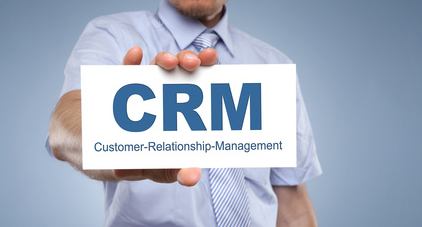What is CRM?
In the world of digital marketing there is a very popular acronym known as CRM. We’ve all heard it. It’s an acronym that all executive leaders like to talk about, all managers act like they know how to use, and analysts feel the right way to quantify it. Well, before you step into a world of high cost software packages, or massive agency budgets, I’d like to recommend a simplified view of what it really is. Wikipedia defines it as:
Customer relationship management (CRM) is a system for managing a company’s interactions with current and future customers. It often involves using technology to organize, automate and synchronize sales, marketing, customer service, and technical support.
…but I would like to simplify it a bit and suggest that we rename it to be Count, Relate, and Monetize. When simplified like this, it may actually seem like a task you could actually accomplish rather than dream about it for a long time and never do anything about it.
Count
Starting with the basics, do you really have visibility as to how many assets or existing customers you have to make your Digital Marketing efforts do well? Assets? …Examples of assets are:
- Registered customers
- Active 180 day email open subscribers
- Active mobile apps
- Active browser apps
- Social followers
- Mailing list
- SMS lists
Understanding the trending and volumes of these assets is critical as you start the planning of your marketing by realizing the biggest area of opportunity of assets to engage with your customer base in the first place. Spoiler alert …CRM is all about building audiences for your promotions, and communicating the promotions to your valuable customers through your assets. You will not do it well without the growth and optimization of assets like these.
Relate
The goal of relating with your existing and potential customers is to engage with them. Engagement with your customers means that you are that much closer to a potential conversion with the most valuable customers in your business, BUT if you don’t have the means to communicate with them, it will not be very easy. This is why asset “Count” is so important to the “Relate” piece of CRM. You can’t rely on PPC, Organic, and Radio spots alone to drive engagement from your existing customers, but they need to be a piece of the overall omni-channel communication experience.
The difficult part about relating with your customers is that you have to figure out WHAT topics or content to engage your customers with. Well, just like you would bring up topics that your friends would have interest in, you need to find implicit ways (unless you have explicit questions in your account signup) to understand what they would like to receive from you. Some implicit examples might be:
- What has the customer put in the cart?
- What categories did they visit on your site?
- What have they clicked in previous emails?
- What have they purchased in the past?
- Do you have a social login? Grab the Social Interests from it.
- What have they looked at in your mobile app?
Once you are able to start capturing these Implicit actions, this is where you are able to start building audiences. Audiences are critical to understand before you start doing any marketing as this is the most significant form of personalization that you can give your customer. Deliver messages to your customers that are in tune with what matters to them. This matches perfectly with the studies of Implicit Egotism that shows that customers are organically prideful, love to be catered to, they love the fact that companies are listening to them, and ultimately this will help with a conversion decision of the journey. Counting and trending your audiences segments will also help form future products or promotions as well.
Monetize
Now that you have found simple ways to count your assets, and build audiences to relate well with your customers, now you need to find which combinations will bring in the best profitability and engagements for your efforts. You need to COUNT which combination of asset and communication…
- brings in customers with the highest LTV (life time value)
- acquires New Customers the most effectively
- re-engages with your ageing customers
- influences the highest omni-channel engagers
- cross promotes other assets
- promotes your most frequent visitors
If you can answer these questions with your reporting, then you now have the knowledge to go do some profitable communications and build beneficial relationships. For some of you conservative marketers out there, yes, RFM (Recency, Frequency, Monetization) is secretly captured in this model, but I dare not suggest that RFM is fit for every company out there. It needs to be tweaked to fit the specific benchmarking needs for each company goal.
Bottom line, if you are able to COUNT, RELATE, and MONETIZE in these simplest of forms, you can do CRM. For some, the right answer might be to install big software packages that integrate with every system that you have based on the volumes you are working on, but you don’t always have to go that route. Regardless, the goal should always be: The right product, the right channel, for the right customer, and you will continue to win with engagement in a profitable way.
